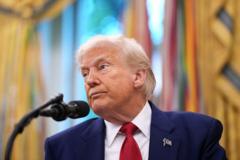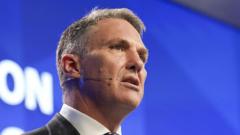The upcoming Australian federal election, scheduled for May 3, is set to determine the next prime minister and reshape the parliament. With compulsory voting and a distinctive preferential system, Australians will participate in this democratic exercise with significant implications for both political parties and the populace.
Australia's Upcoming Federal Election: A Guide to Voting and Candidates

Australia's Upcoming Federal Election: A Guide to Voting and Candidates
As Australia prepares for its federal election, voters will need to understand the unique electoral process and the key issues at stake.
Australia's voting system mandates participation from all citizens aged 18 and over, boasting nearly 98% registration among eligible voters. Unlike the First Past the Post model prevalent in the UK and parts of the US, Australia employs a preferential voting system, requiring voters to rank candidates by preference. This ensures that more nuanced voting outcomes can be reached, often resulting in prolonged counting procedures until a candidate secures a clear majority.
This election will see all 150 seats of the House of Representatives and 40 seats in the Senate contested. The two predominant parties are the Australian Labor Party and the Liberal-National coalition, with the former currently holding a narrow majority established during the 2022 election. Labor's governance, however, remains fragile, as losing just a couple of seats could strip their majority.
The race is expected to center on current Prime Minister Anthony Albanese and his main challenger, Peter Dutton, the new opposition leader. Albanese's administration has faced increasing scrutiny as cost-of-living issues rise to the forefront, including the impacts of inflation and soaring housing expenses on everyday Australians. While Dutton aims to restore the coalition's standing, key topics like housing affordability and economic management will be pivotal in swaying voters.
Results from the election are anticipated to be known on the night of the polls, facilitated by an indicative count from the Australian Election Commission (AEC). However, formal declarations may take several days, reflecting the intricacies of the preferential voting system.
In summary, this election represents a crucial moment for Australian voters, as they assess candidates and policies that will shape the nation’s future.
This election will see all 150 seats of the House of Representatives and 40 seats in the Senate contested. The two predominant parties are the Australian Labor Party and the Liberal-National coalition, with the former currently holding a narrow majority established during the 2022 election. Labor's governance, however, remains fragile, as losing just a couple of seats could strip their majority.
The race is expected to center on current Prime Minister Anthony Albanese and his main challenger, Peter Dutton, the new opposition leader. Albanese's administration has faced increasing scrutiny as cost-of-living issues rise to the forefront, including the impacts of inflation and soaring housing expenses on everyday Australians. While Dutton aims to restore the coalition's standing, key topics like housing affordability and economic management will be pivotal in swaying voters.
Results from the election are anticipated to be known on the night of the polls, facilitated by an indicative count from the Australian Election Commission (AEC). However, formal declarations may take several days, reflecting the intricacies of the preferential voting system.
In summary, this election represents a crucial moment for Australian voters, as they assess candidates and policies that will shape the nation’s future.




















